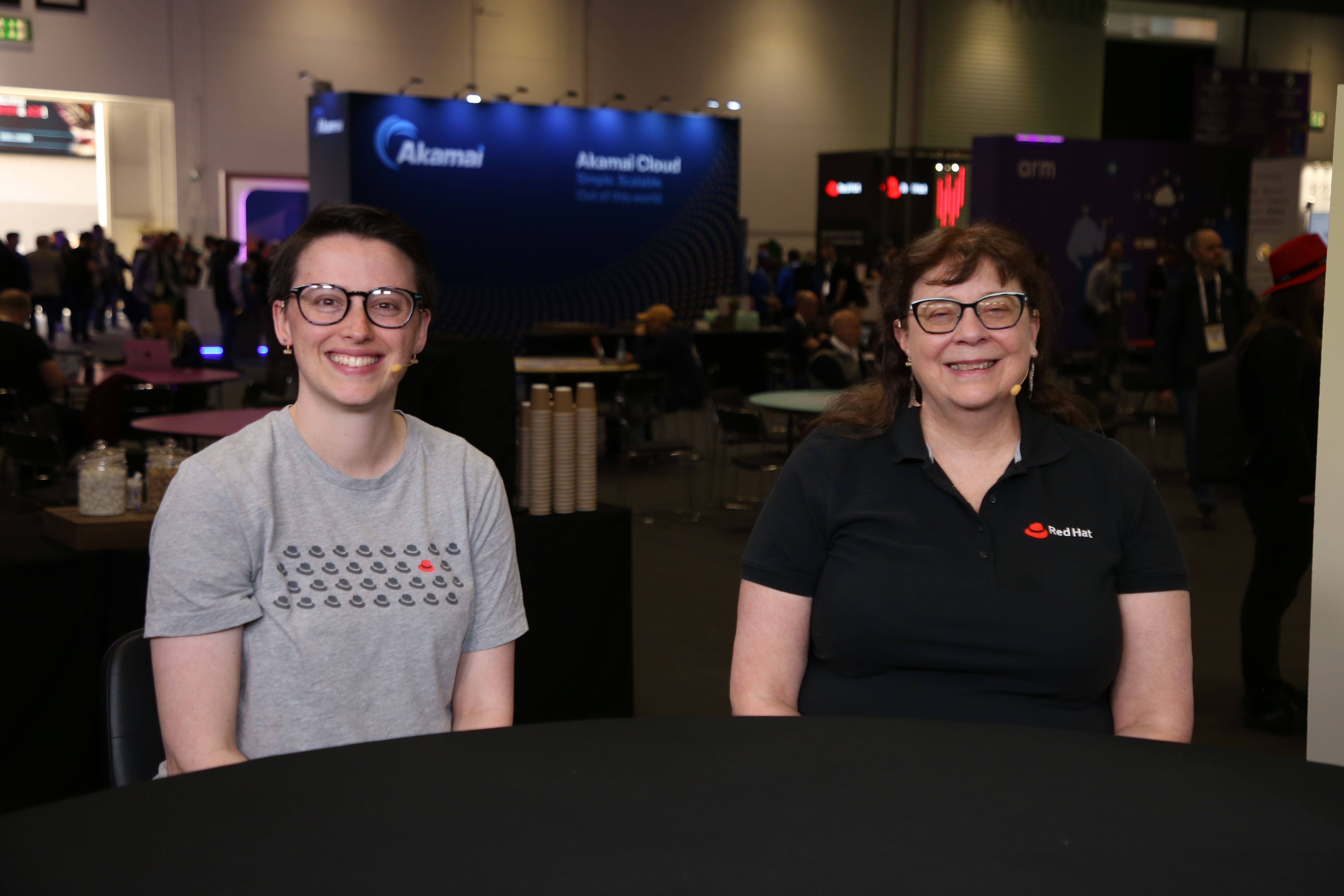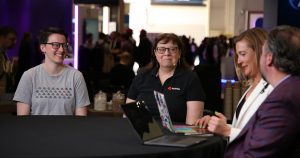 AI
AI
 AI
AI
 AI
AI
As platform engineering continues to evolve, enterprises are navigating challenges that range from early adoption hurdles to advanced scalability and compliance.
Modern cloud-native organizations are embracing new architectures and processes, but the journey is far from linear. Conversations around DevSecOps, data sovereignty and artificial intelligence-enablement are intersecting with technological advances such as GitOps, Service Mesh and confidential computing. These innovations are not only shaping deployment pipelines, but also redefining how teams collaborate, build and secure software in a multicloud world, according to Harriet Lawrence (pictured, left), principal product manager for OpenShift at Red Hat Inc.

Red Hat’s Harriet Lawrence and Kirsten Newcomer discuss platform engineering with theCUBE.
“We still see a lot of our customers at the beginning of their adoption. They’re still new to platform engineering,” Lawrence said. “You see folks right at the other end who are right at the front edge. They’re doing lots of really exciting stuff in platform engineering. They’ve had platform engineering teams for years. They’re very involved in it.”
Lawrence and Kirsten Newcomer (right), senior director of OpenShift and security product management at Red Hat, spoke with theCUBE’s Savannah Peterson and Rob Strechay at KubeCon + CloudNativeCon Europe, during an exclusive broadcast on theCUBE, SiliconANGLE Media’s livestreaming studio. They discussed the evolving landscape of platform engineering, including DevSecOps adoption, scaling challenges, AI integration and the role of community collaboration in building secure, flexible cloud-native systems. (* Disclosure below.)
Red Hat is seeing a broad spectrum of maturity among its customers in platform engineering. While some are just beginning to explore its potential, others are pioneering sophisticated approaches to DevSecOps and developer enablement. As companies mature, the problems they face become more nuanced, according to Lawrence.
“At the start, you’re still trying to get an understanding of what you have today and what platform engineering can bring for you and how that change from purely development over to DevSecOps, a style of doing things can make such a difference,” she said. “Once you’re a bit more involved and getting into all the different communities and kind of leveling up your community usage, you see really specific problems coming in.”
On the more advanced end, larger organizations are wrestling with how to scale platform teams while preserving security and compliance. Red Hat emphasizes community collaboration as key to addressing these challenges, helping developers and security professionals “meet in the middle” rather than working in silos. Shifting left is not just about tools — it’s about process and communication, Newcomer explained.
“One of the things that we often talk about with waves of change in the industry, happened with the adoption of containers and Kube and the importance of that,” she said. “Now, we’re seeing with AI-enabled apps similar. You need to think about not just the tools but the people in the process as well.”
AI and confidential computing are also shaping the future of platform engineering. Red Hat is investing in OpenShift Lightspeed and gen AI capabilities to help developers generate YAML files, configure security policies and deploy models — especially at the edge. While production use of gen AI remains in its early days, Red Hat sees promising greenfield opportunities emerging, according to Newcomer.
“We are working on OpenShift Lightspeed — it’s still in beta,” she said. “We’re hoping to GA later this year. Part of the thinking there is … everybody’s dealing with chat bots. The challenge is making them strong and have good information so that they can give you the right information back.”
Here’s the complete video interview, part of SiliconANGLE’s and theCUBE’s coverage of KubeCon + CloudNativeCon Europe:
(* Disclosure: Red Hat Inc. sponsored this segment of theCUBE. Neither Red Hat nor other sponsors have editorial control over content on theCUBE or SiliconANGLE.)
Support our mission to keep content open and free by engaging with theCUBE community. Join theCUBE’s Alumni Trust Network, where technology leaders connect, share intelligence and create opportunities.
Founded by tech visionaries John Furrier and Dave Vellante, SiliconANGLE Media has built a dynamic ecosystem of industry-leading digital media brands that reach 15+ million elite tech professionals. Our new proprietary theCUBE AI Video Cloud is breaking ground in audience interaction, leveraging theCUBEai.com neural network to help technology companies make data-driven decisions and stay at the forefront of industry conversations.